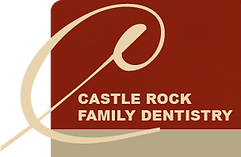Back in Plaque

Prior to becoming a dentist, I think the majority of my knowledge concerning dental plaque came from a Tarzan-like bottle of Cool Mint Listerine swinging through a computer-generated jungle to the beloved music of the 1980’s new wave band Baltimora. (Do yourself a favor and watch a few minutes of the music video for “Tarzan Boy”, you won’t be disappointed.) My guess is that both my dentist and hygienist mentioned plaque a time or two, but apparently they needed to be swinging from jungle vines for it to make any impact on me. That gives me an idea for the office…
What is plaque?
Scientific version: A bacteria-containing biofilm that attaches to the oral cavity.
Less scientific version: That nasty stuff that sticks to your teeth and makes them feel fuzzy first thing in the morning. It is nearly colorless in the early stages and contains a variety of bacteria that don’t want good things for your oral health. Okay, okay, they don’t “want” anything, but their presence in large amounts over long periods of time contribute to cavities and gum disease.
How does plaque contribute to cavities and gum disease?
The bacteria in plaque irritate gum tissue making them red and swollen. If you have ever met someone whose gums look like they are on fire, you know what I’m talking about. This early stage of gum disease is called gingivitis. Plaque generally accumulates on surfaces of the teeth that aren’t naturally cleaned by your lips, cheeks, and other teeth as you talk and eat: near the gum line and in between teeth. As the plaque sits on teeth over time, the bacteria uses the sugary parts of your diet to produce acid that wears down the enamel which results in cavities. If plaque is left long enough, it will harden into calculus or tartar. Tartar is the stuff your hygienist enjoys scraping off your teeth.
I don’t want to be back in plaque, what can I do?
Let’s go with the bad news first. Plaque formation is a natural process that begins minutes after you brush your teeth. So far we haven’t developed anything that can predictably prevent plaque formation.
The good news is that we have developed a number of incredibly advanced instruments and techniques to thoroughly remove plaque from teeth: toothbrushes, toothpaste and floss.
Incredibly advanced? You know I’m in a vulnerable state right now. What are the real advances?
Really, you already have the tools you need to combat this daily problem. Plaque is sticky and needs to be mechanically removed from teeth through proper brushing and flossing. Freshly cleaned teeth attracts the building blocks of plaque formation which is why the process begins so quickly. This is why we recommend brushing at least twice daily for a minimum of two minutes at each brushing. Plaque is more tenacious than you might think and each surface needs to be thoroughly cleaned.
Keep in mind that no one is perfect and some plaque will end up transitioning to tartar before it can be removed. This accounts for the necessity of periodic cleanings and exams. Plaque accumulation and tartar formation can happen differently for different people. This means that some people require more maintenance than others to keep their teeth and gums healthy. Your dentist and hygienist will help you set up cleaning intervals that are right for you.
Plaque is certainly a problem that has to be dealt with regularly to avoid gum disease and cavities, but you have the tools at your disposal to keep it in check!
For easier access to the aforementioned “Tarzan Boy” I have provided the YouTube link below. Feel free to re-read the article while listening for optimal impact.























